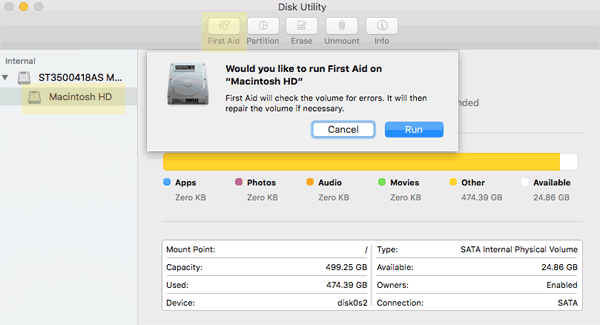

- #Copy the path for a disk osx el capitan how to
- #Copy the path for a disk osx el capitan mac os x
- #Copy the path for a disk osx el capitan software
#Copy the path for a disk osx el capitan software
To ensure that no one can use disk recovery software on your drive, it’s best to use Apple’s FileVault. Apple’s FileVault full-disk encryption ensures that even when files are saved multiple times in different areas of a drive, they are encrypted.

Why Apple’s FileVault is your best solution Note that the time it takes to erase the free space is multiplied by the number of passes. The following describes what these numbers mean: Replace DRIVE with the name of your drive, and LEVEL to a number from 0 to 4. The command is as follows:ĭiskutil secureErase freespace LEVEL /Volumes/DRIVE (This feature used to be available in Disk Utility, but Apple removed it.). To fully clean up your drive, you can use another Terminal command to securely erase all its free space.
#Copy the path for a disk osx el capitan how to
How to securely erase free space in El Capitan However, this command may still not delete other copies of a file that had previously been written to other parts of your disk. If you want to delete a folder, then use this command:

If the file is very large, this may take a while. Press Return, and the file will be securely deleted. Drag a file that you want to delete into the Terminal window you’ll see that Terminal adds its file path. For example, you can use a command called srm, which can “securely remove files or directories.” To do this, open Terminal (go to Finder > Applications > Utilities) it’s in the Utilities folder in your Applications folder, and then type the following: There are still a couple of ways you can securely delete files in El Capitan. How to securely delete files in El Capitan While many Mac users miss this option, Apple felt it’s better to be safe and not offer it if the feature isn’t 100% reliable. As such, securely emptying the Trash is not reliable. In layman’s terms, what this means is that while you may be able to securely delete a file or folder, you cannot be certain that other copies of that file are not recoverable. When OS X saves a copy of a file, it doesn’t write that file to the same part of the disk. This issue was addressed by removing the “Secure Empty Trash” option. Impact: The “Secure Empty Trash” feature may not securely delete files placed in the Trashĭescription: An issue existed in guaranteeing secure deletion of Trash files on some systems, such as those with flash storage.
#Copy the path for a disk osx el capitan mac os x
As the company says in its notes for security fixes:Īvailable for: Mac OS X v10.6.8 and later Unfortunately, when OS X El Capitan was released, Apple removed the Secure Empty Trash feature due to a vulnerability identifid as CVE-2015-5901. What this did was overwrite the files with zeroes, making it much harder - nearly impossible, in fact - to recover the files. Previous versions of OS X used to have a Secure Empty Trash feature, which would securely delete the contents of the Trash. Apple + How To + Recommended How to Securely Empty Trash in OS X El Capitan


 0 kommentar(er)
0 kommentar(er)
